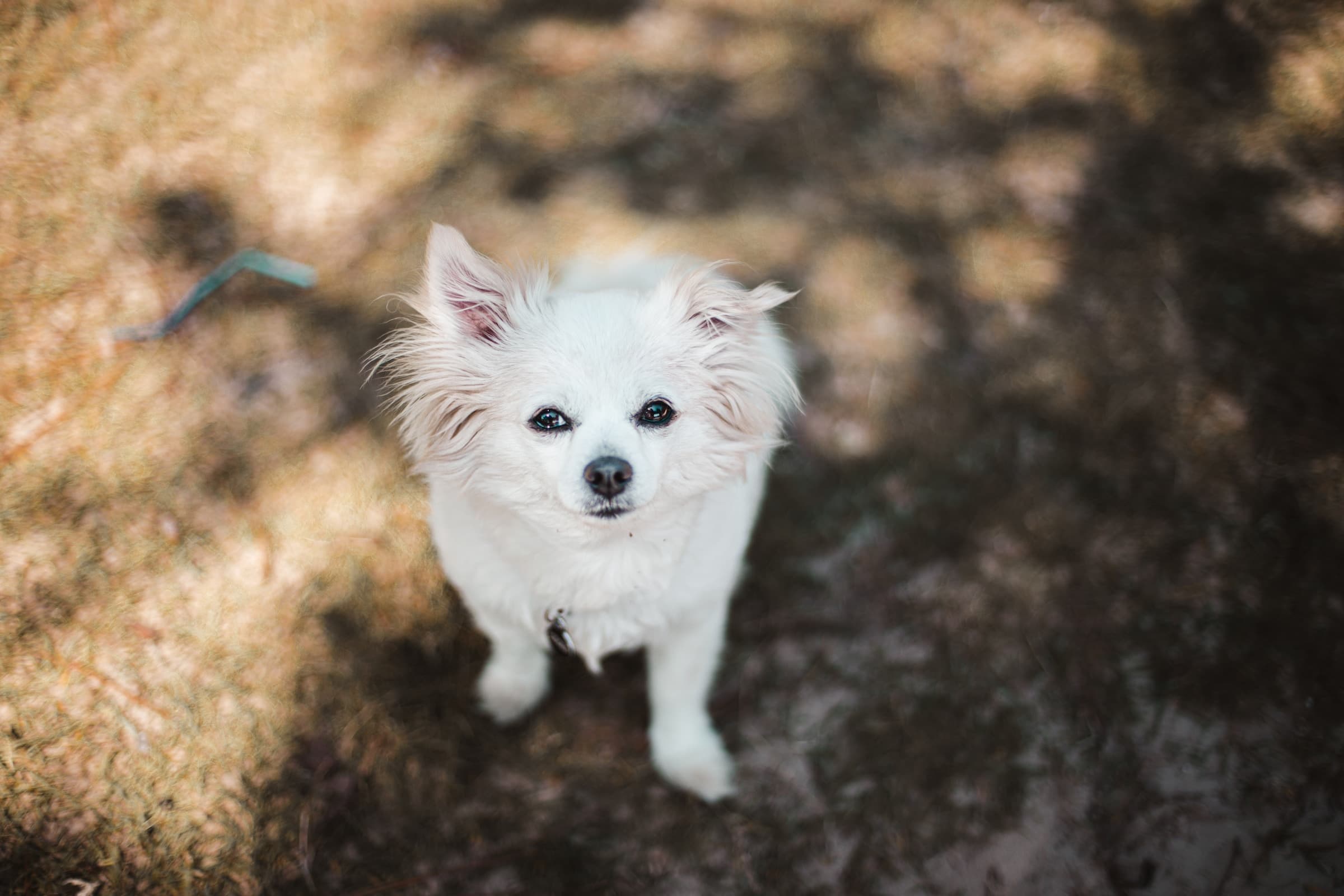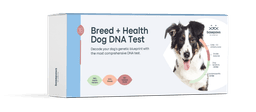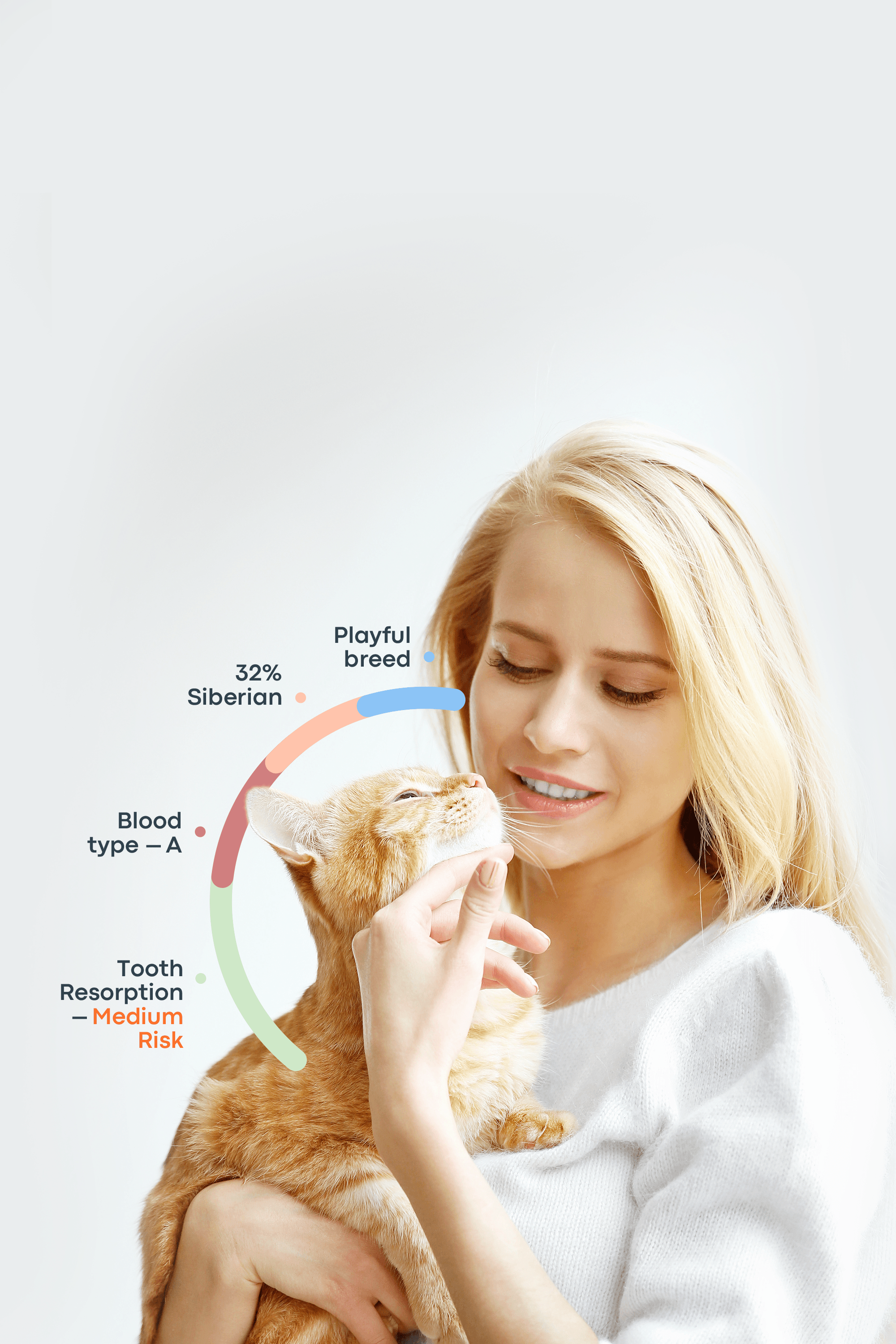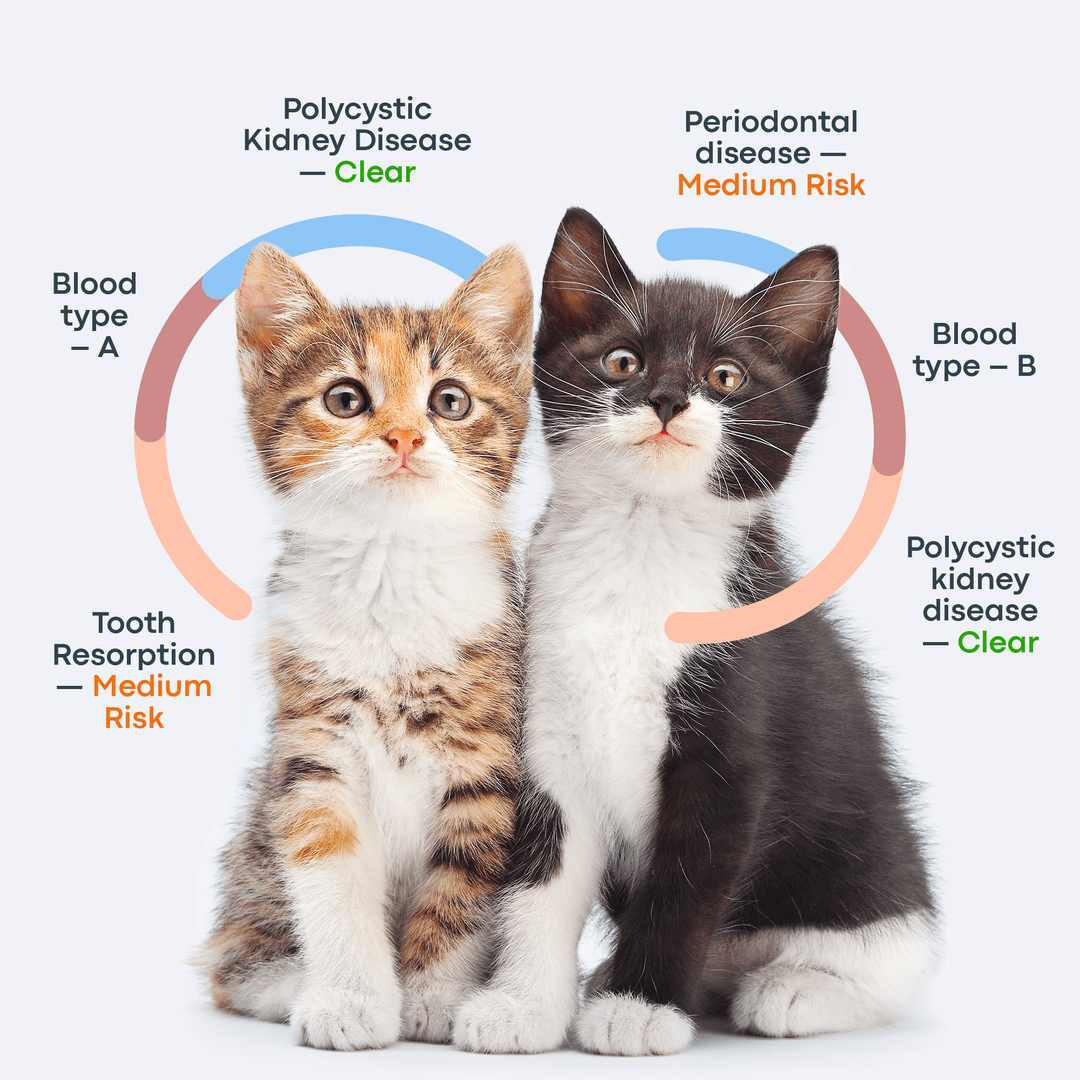Small dogs have a special way of stealing our hearts. Charming, versatile, and perfectly suited for compact spaces, they can turn any apartment into a cozy home and are easy to take along on your travels.
These pint-sized companions make wonderful cuddle buddies. One of the best things about small dogs is how well they adapt to different households—whether you’re an active young adult, a relaxed senior, or a family with children. Despite their size, they give a remarkable amount of love and affection.

This guide highlights 20 fluffy, adorable dogs that stay small throughout their lives. Learn about the unique traits, personalities, and care needs of each breed, so you can make an informed decision about which furry friend is the perfect fit for your lifestyle.
15 Adorable Dogs That Stay Small
1. Chihuahua

Category | Measurement |
Height | 5–8 inches |
Weight | 4–6 lb. |
The smallest dog breed in the canine world takes the top spot on our list of dogs that stay small: the Chihuahua. These lively little dogs are packed with personality. They are alert, courageous, and fiercely loyal to their families. Like many small breeds, some Chihuahuas can show a touch of aggression, but their charm and devotion often outweigh it.
Chihuahuas, or “Chis” as they are affectionately called, come in two coat types: smooth and long. Both require regular brushing to prevent mats and tangles. They are easily recognizable by their distinctive “apple” or “deer”-shaped heads.
Despite their tiny size, Chis have plenty of energy and need at least 30 minutes of daily exercise and mental stimulation. Daily walks and indoor play help prevent unwanted behaviors such as excessive barking or chewing on furniture.
Native to Mexico—specifically named after the state of Chihuahua—these Velcro dogs stick close to their owners and make excellent watchdogs. The ideal Chihuahua owner is patient, attentive, and available for frequent interaction, making them perfect for individuals or families who spend a lot of time at home.
2. Pomeranian

Category | Measurement |
Height | 8–12 inches |
Weight | 3–7 lb. |
Pomeranians are alert, bold, and lively little dogs with a curious, spirited nature. This tiny, fox-faced breed is best known for packing a big personality into a pocket-sized frame. Affectionately called “Poms,” they are energetic, expressive, and always on the lookout, making them attentive companions. Their fluffy double coat requires regular brushing several times a week to stay clean and tangle-free.
Pomeranians are famous for their bold attitude and strong loyalty. Descended from larger sled-pulling Spitz dogs, they’ve earned the nickname “the little lion.” With moderate energy levels—they enjoy short walks, playful sessions, and then curling up beside their owners—Pomeranians are ideal for apartment living or anyone looking for a small, social, and affectionate companion.
3. Maltese

Category | Measurement |
Height | 8–10 inches |
Weight | 4–9 lb |
The Maltese is an affectionate, playful, and intelligent toy breed known for its long, silky white coat and charming, people-oriented personality. According to the AKC, their temperament is typically playful, gentle, and charming, making them a delight to have around.
Although their coat is low-shedding and often considered hypoallergenic, it does require consistent grooming to prevent tangles and mats. Many owners choose shorter “puppy cuts” for easier maintenance, while others enjoy the traditional long show coat.
Despite their delicate appearance, Maltese dogs are moderately active. They enjoy short walks, indoor play, and—true to their companion-breed background—plenty of cuddle time. Their history traces back nearly 2,000 years to the island of Malta, where they were cherished by nobles and aristocrats. One famous Maltese, Trouble, even made headlines in 2011 after inheriting $2 million from their owner.
Because of their sweet, adaptable nature, Maltese dogs are a wonderful fit for seniors, first-time dog owners, apartment living, and families with calm, older children. They thrive on attention, companionship, and a gentle environment.
4. Shih Tzu

Category | Measurement |
Height | 8–11 inches |
Weight | 9–16 lb |
The Shih Tzu is a lively, affectionate companion breed—created specifically to warm laps and hearts. One of their most iconic features is their long, flowing coat: silky, beautiful, and in need of regular brushing, plus occasional professional grooming to keep it healthy and tangle-free. Their exercise needs are modest; a short daily walk and a bit of indoor play are usually enough to keep these mellow dogs happy.
Bred in imperial China centuries ago, Shih Tzus were treasured as pampered palace pets, a role they still embrace with enthusiasm. They thrive on human company and enjoy being close to their people at all times.
Ideal homes for Shih Tzus are apartments or smaller living spaces, as long as they receive plenty of attention and gentle care. They’re a great match for individuals, couples, or families who can offer daily companionship, regular grooming, and a calm, low-key environment.
5. Yorkshire Terrier

Category | Measurement |
Height | 6–9 inches |
Weight | 3–7 lb |
Yorkshire Terriers originated in England and have grown into one of the most popular toy breeds worldwide. Affectionately known as Yorkies, they are celebrated for their compact size, elegant, silky coats, and bright, confident personalities.
Yorkies make excellent companions for responsible children, seniors with limited mobility, first-time dog owners, and even families with other pets. Because they’re highly intelligent and sometimes a bit independent, early socialization and consistent training are important to help them develop good manners and confidence.
Despite their tiny stature, Yorkshire Terriers are energetic and spirited. They benefit from daily walks, play sessions, and mental stimulation to stay happy and healthy. Their charm and distinctive look have also earned them many iconic roles in movies, TV shows, and popular culture, further cementing their status as beloved companion dogs.
6. Papillon

Category | Measurement |
Height | 8–11 inches |
Weight | 9–10 lb |
Papillon dogs are celebrated for their intelligence, adaptability, and friendly nature, making them excellent family pets and companions. Quick learners and eager to please, they are generally easy to train, though consistent guidance is always helpful. Papillons need at least 30–60 minutes of daily exercise to stay healthy and mentally stimulated, and their silky coat requires daily brushing to prevent tangles and mats.
The name Papillon means “butterfly” in French, a nod to their signature, butterfly-shaped ears. These charming, playful dogs delight both families and agility enthusiasts, excelling in training, tricks, and competitive events. Known for their devotion, intelligence, and lively personalities, Papillons continue to capture hearts worldwide with their adorable looks and engaging character.
7. Toy Poodle

Category | Measurement |
Height | Less than 10 inches |
Weight | 4–6 lb |
Toy Poodles are the smallest members of the Poodle family, yet they share the same intelligence and trainability as their larger counterparts. In fact, according to PetMD, Poodles are the second-smartest dog breed in the world. Beyond their brains, Toy Poodles are cherished for their friendly, affectionate, and charming personalities.
Their dense, curly—or occasionally corded—coat is hypoallergenic and sheds minimally, making them a great choice for allergy-sensitive households. However, their signature look requires consistent grooming and regular trims to stay neat and healthy.
Toy Poodles thrive with daily exercise and benefit greatly from early, consistent training and socialization. With their sharp minds and lively temperament, they are an excellent fit for individuals, couples, or families with older, gentle children who can appreciate and engage with an intelligent, active little dog.
8. French Bulldog

Category | Measurement |
Height | 11–13 inches |
Weight | 25–28 lb |
According to the AKC, the French Bulldog was the most popular dog breed in the United States in 2024.
French Bulldogs, affectionately called Frenchies, are known for their distinctive bat-like ears and easygoing, playful personality. They are relatively quiet, love to lounge, and enjoy entertaining their families with their charming antics.
While Frenchies don’t require extensive exercise, a daily walk of around 30 minutes helps keep them healthy and mentally stimulated. Their short coat is low-maintenance, though they do shed and are not suitable for allergy-prone households.
It’s important to note that French Bulldogs are prone to brachycephalic syndrome due to their flattened faces, which can lead to breathing difficulties. They may also experience eye and skin issues and are prone to overheating. For these reasons, Frenchies are best suited to owners who are home for most of the day and can provide attentive care.
9. Cavalier King Charles Spaniel

Category | Measurement |
Height | 12–13 inches |
Weight | 12–18 lb |
Cavalier King Charles Spaniels are among the most beloved fluffy cute small dogs, admired for their appearance and affectionate nature. They are friendly, charming, and easily win over both humans and other pets. These adaptable toy dogs enjoy lively outdoor play as well as quiet indoor lounging, thriving as long as they are close to their people.
Cavaliers are social and affectionate, flourishing in homes with plenty of companionship—whether with a single owner, a senior, or a busy family with children. Their silky coat requires daily brushing, but overall they are not overly high-maintenance. Regular exercise and a consistent grooming routine help keep them healthy, happy, and prevent boredom-related behaviors. Gentle, loyal, and endlessly loving, Cavalier King Charles Spaniels are a perfect fit for nearly any household.
10. Havanese

Category | Measurement |
Height | 8.5–11.5 inches |
Weight | 7–13 lb |
The Havanese is the national dog of Cuba, named after the country’s capital, Havana. Historically, wealthy Cubans kept these small, fluffy dogs as lapdogs, prized for their charming and affectionate nature.
Havanese dogs have a long, silky coat, a curled tail, a furry mustache, and folded ears. They come in a variety of colors, including black, chocolate, red, and silver. Known for their friendly, playful, and loving personalities, they make excellent companions.
Their coat requires daily brushing to prevent tangles, and their exercise needs are moderate—a brisk walk combined with some indoor play usually suffices. As small height dogs, they thrive on human companionship and are happiest when they are not left alone for long periods. They are well-suited for families with responsible children, seniors, or solo owners who can provide consistent attention and care.
11. Bichon Frise

Category | Measurement |
Height | 9.5–11.5 inches |
Weight | 12–18 lb |
If you’re considering small dog breeds, the Bichon Frise is an excellent choice. This breed originated in the Mediterranean, primarily in Italy and Spain, where they were often featured in paintings, and later became popular in France.
Bichons are intelligent, easy to train, and highly adaptable, making them a great fit for a variety of living situations, including small apartments. Their friendly and affectionate nature makes them ideal companions for people of all ages. They are gentle, patient, and especially well-suited for families with children.
The Bichon Frise is known for its fluffy, white, hypoallergenic coat, which requires daily brushing to prevent mats and tangles. In addition to grooming, they need daily walks of around 30 minutes and 15–20 minutes of mental stimulation through puzzle games or training. Regular obedience and agility training not only prevent behavioral issues but also keep these smart, lively dogs happy and engaged.
12. Pug

Category | Measurement |
Height | 10–13 inches |
Weight | 14–18 lb |
When you think of a Pug, their distinctive appearance immediately comes to mind. It is these unique features—the wrinkled face, curled tail, and compact, sturdy body—that make them so lovable and easily recognizable among small cute dog breeds. Originating in China centuries ago, Pugs have a long history as companion dogs, cherished for their playful and affectionate nature. They are well known for their friendly demeanor, making them excellent family pets.
Pugs have large, expressive eyes that seem to reflect their personality and emotions. Their short, smooth double coat requires regular grooming, including daily brushing to manage shedding. Despite their charming appearance, Pugs are prone to several health issues. Common concerns include breathing difficulties due to their short muzzles, a tendency to overheat, and problems with their skin and eyes. Prospective owners should be aware of these challenges and ensure proper care, a healthy diet, and regular veterinary checkups to help their Pug live a happy, comfortable life.
13. Dachshund

Category | Measurement |
Height | 8–9 inches |
Weight | 16–32 lb |
Dachshunds are small, long-bodied dogs with short legs and a bold personality. Often called Wiener dogs, sausage dogs, hot dogs, or Dachsies, they were originally developed in Germany as scent hounds. Their name comes from the German words “Dachs” (badger) and “Hund” (dog), reflecting their original purpose—pursuing badgers and other burrowing animals.
Dachshunds are intelligent, lively, and surprisingly courageous for their size. They are naturally alert and make excellent watchdogs. The breed comes in three coat types—smooth, wirehaired, and longhaired—each with its own grooming needs. The longhaired and wirehaired varieties require regular brushing to prevent mats and tangles, while the smooth-coated type is generally low-maintenance.
Because of their distinctive long backs, Dachshunds are prone to intervertebral disc disease (IVDD). To support spinal health, they need gentle, consistent exercise and should avoid activities that put strain on their spine, such as frequent jumping on and off furniture.
Dachsies can be independent and strong-willed, so they benefit from patient, consistent training. They do best with owners who can provide structured routines, plenty of mental stimulation, and an active lifestyle. With good training and proper care, Dachshunds become loyal, entertaining, and affectionate companions.
14. Miniature Schnauzer

Category | Measurement |
Height | 12–14 inches |
Weight | 11–18 lb |
Miniature Schnauzers make wonderful companions. They are lively, intelligent, friendly, and often downright comical—many owners say these dogs seem to have a sense of humor. Their signature look includes a sturdy, compact build, expressive bushy eyebrows, and a prominent beard, giving them a charming, almost distinguished appearance. No wonder they tend to make people smile wherever they go.
The breed originated in Germany in the late 1800s, where they were developed as farm dogs and expert ratters. Today, they retain much of that alertness and working-dog spirit. Although Mini Schnauzers are considered low shedders, they do require regular coat care. A quick daily brushing helps prevent tangles, and most dogs need professional grooming every 4–6 weeks to keep their coats in good condition.
Despite their small size, Mini Schnauzers are energetic and thrive on activity. They need at least an hour of exercise each day, plus mental stimulation through training, puzzle toys, or interactive play. Their sharp minds and eager-to-please nature make them excellent candidates for obedience, agility, and other canine sports.
Affectionate, loyal, and adaptable, Mini Schnauzers fit well into both active single households and busy family environments. With proper training, attention, and exercise, they become devoted, entertaining, and well-rounded companions.
15. Boston Terrier

Category | Measurement |
Height | 15–17 inches |
Weight | 15–25 lb |
The Boston Terrier is a beloved breed known for both its distinctive looks and charming personality. Originally developed in the late 19th century in the United States, these dogs were bred to be loyal and affectionate companions. Their tuxedo-like markings and polite, dignified nature earned them the nickname “The American Gentleman.”
Friendly and highly social, Boston Terriers tend to win hearts wherever they go. They adapt well to almost any living situation—apartments, busy households, or quiet homes—and make excellent pets for individuals, couples, and families alike. They are typically patient and gentle with children and usually get along well with other pets when properly introduced.
Boston Terriers have moderate exercise needs. A couple of daily walks and some playtime are usually enough to keep them healthy and content. Their short coat is low-maintenance, but weekly brushing helps remove loose fur and keeps their skin and coat in good condition.
Loyal, affectionate, and full of personality, Boston Terriers make delightful companions for a wide range of homes and lifestyles.
Fluffy Cute Small Dogs You’ll Fall in Love With
Fluffy small dogs have a special kind of charm—soft coats, tiny paws, and sweet expressions that can melt anyone’s heart. These little companions don’t just look adorable; they’re also packed with personality. Whether they’re trotting proudly beside you or curling up in your lap, fluffy small breeds bring warmth and joy to every moment.
From the cloud-like Bichon Frise to the spirited Pomeranian or the affectionate Maltese, these breeds stand out for their cuddly coats and lovable temperaments. Many of them are friendly, playful, and deeply devoted to their families. Their compact size makes them ideal for apartment living, while their fluffy appearance adds an extra layer of cuteness that makes them irresistible to dog lovers everywhere.
Beyond their good looks, fluffy small dogs are wonderful companions who love being part of your daily routine. They enjoy short walks, cozy naps, and plenty of attention. With proper grooming and regular brushing, their beautiful coats stay soft and healthy. Whether you’re looking for a cuddle buddy or a cheerful little friend, these fluffy pups are guaranteed to steal your heart.
Myths About Dogs That Stay Small
Myth | Reality |
Small dogs don’t need exercise | All dogs, including small breeds, need regular physical activity and mental stimulation to stay healthy and happy. |
Small dogs bark all the time | Barking varies by breed, personality, and training. Many small dogs are quiet if properly trained and socialized. |
Small dogs are easy to train | Small breeds can be stubborn or independent. Consistent, positive training is essential for good behavior. |
Small dogs don’t need socialization | Like all dogs, small breeds benefit from early socialization to develop confidence and reduce anxiety around people, pets, and new environments. |
Small dogs are low-maintenance | Some small breeds require regular grooming, mental engagement, and exercise, just like larger dogs. |
Conclusion
To find the perfect companion, it helps to list small dog breeds and learn about their personalities, care needs, and energy levels. Small dogs are more than just cute faces—they are intelligent, affectionate, and full of character. Despite their size, they need regular exercise, mental stimulation, training, and socialization to thrive. Whether you’re looking for a playful lapdog or a spirited little watchdog, small breeds can fit seamlessly into a variety of lifestyles and homes. By understanding their unique needs and traits, you can enjoy a lifelong bond with a furry friend who stays small but leaves a big impact on your heart.
Frequently Asked Questions
Which dog is the best small breed?
There is no single “best” small dog breed. Many popular small breeds—such as Chihuahuas, French Bulldogs, Pugs, and Cavalier King Charles Spaniels—are adored for their cute looks, affectionate nature, and cheerful personalities. The best choice depends on your lifestyle, experience, and personal preferences.
What is the best small dog breed for a total beginner owner living in a small apartment?
Great options for first-time owners in small apartments include the Shih Tzu, French Bulldog, and Pug. These breeds are typically friendly, adaptable, and have moderate exercise needs.
Which small dog breeds are naturally healthy and long-lived?
Breeds that tend to be long-lived and generally healthy include Chihuahuas, Toy Poodles, Papillons, and Yorkshire Terriers. Of course, genetics, diet, and proper veterinary care also play a major role in lifespan.
What is the best small dog breed suitable for small apartments?
Some excellent apartment-friendly small dog breeds are the French Bulldog, Pug, and Shih Tzu. They adjust well to compact spaces and usually have moderate energy levels.
Are there any small dog breeds that can be kept outside?
No. Small dogs should not be kept outdoors. Most have lower tolerance for extreme temperatures and rely heavily on human companionship. They are safest and happiest living indoors.
What are some low-energy, low-shedding small dog breeds?
Good options include the Maltese, Shih Tzu, Havanese, and Bichon Frise. These breeds shed very little and usually have low-to-moderate energy needs.
What are some common small dog breeds?
Popular small breeds include the Shih Tzu, Chihuahua, Maltese, Yorkshire Terrier, and French Bulldog.
What are the most popular small dog breeds?
Some of the most popular small breeds today are Yorkshire Terriers, French Bulldogs, Miniature Dachshunds, and Cocker Spaniels.
What are the advantages of owning a small dog breed?
Small dogs generally cost less to feed, groom, and care for. They also tend to live longer than larger breeds. Their compact size makes them great fits for apartments, small homes, and urban living.
Are small dog breeds good with children?
Many small breeds are wonderful with kids—such as Cavalier King Charles Spaniels, Pugs, and Beagles. Others, like Chihuahuas, may be too fragile or nervous for homes with very young children. Always research a breed’s temperament and energy levels before choosing a family dog.
How much training do small dog breeds need?
All small dogs benefit from consistent, positive training. Some breeds—like Poodles, Papillons, and Mini Schnauzers—are especially quick learners, while others may be more independent. Good training habits and early socialization make a big difference regardless of breed.



